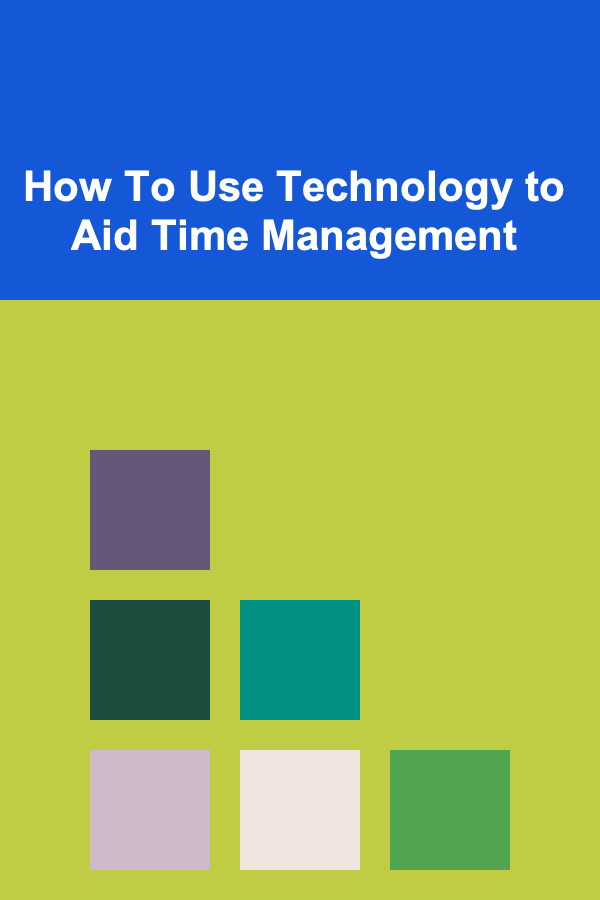
How to Build a Successful Board Game Podcast
ebook include PDF & Audio bundle (Micro Guide)
$12.99$7.99
Limited Time Offer! Order within the next:

The world of board games is experiencing a golden age, with new and innovative titles being released constantly. This boom has also led to a surge in board game media, including video reviews, blogs, and, increasingly, podcasts. If you're passionate about tabletop games and have a knack for conversation, starting a board game podcast can be a rewarding and engaging experience. However, success in this niche requires more than just enthusiasm. It demands careful planning, consistent effort, and a genuine desire to connect with your audience. This guide will provide a comprehensive overview of the steps involved in building a thriving board game podcast, from initial concept to audience growth and monetization.
I. Defining Your Podcast
Before you even think about buying equipment or recording your first episode, you need to define the core elements of your podcast. This involves identifying your niche, target audience, and overall style. These decisions will shape everything from your content to your marketing strategy.
A. Finding Your Niche
The board game podcasting landscape is already quite crowded. To stand out, you need to carve out a specific niche. Consider these potential angles:
- Genre Focus: Specialize in a particular genre of board games, such as worker placement, cooperative games, war games, social deduction, or abstract strategy. Focusing on a niche allows you to become an expert and attract listeners specifically interested in that type of game. For example, a podcast dedicated solely to 18XX games will naturally attract a dedicated audience.
- Gameplay Style: Concentrate on podcasts centered around solo gaming, 2-player games, or large group games. Each play style comes with unique considerations and appeals to a different audience.
- Audience Demographics: Target a specific demographic, such as families, experienced gamers, or newcomers to the hobby. A family-oriented podcast might focus on games suitable for children and parents, while a podcast for experienced gamers could delve into more complex strategies and design mechanics.
- Geographic Location: Focus on board games from your region or country. This is a good option if there is an active local game design and publishing community.
- Unique Format: Develop a unique format, such as a narrative-driven podcast that tells stories through board games, a podcast that combines board games with other hobbies, or a podcast that focuses on the history and evolution of board games.
- Component Focus: A podcast dedicated to the art, design, and construction of board game components. This could involve interviews with artists, discussions of materials, and analysis of how components affect gameplay.
Ask yourself: What unique perspective can I bring to the table? What aspects of board gaming am I most passionate about? Where do I see gaps in the existing podcast landscape?
B. Identifying Your Target Audience
Knowing your target audience is crucial for creating content that resonates and attracting loyal listeners. Consider the following questions:
- Experience Level: Are you targeting beginners, intermediate players, or seasoned veterans?
- Age Range: Are you targeting families, young adults, or older gamers?
- Interests: What other interests do your target listeners have (e.g., video games, books, movies, history)?
- Location: Are you targeting a specific geographic region?
- Game Preferences: What types of games do they typically enjoy (e.g., thematic games, strategy games, party games)?
Creating a detailed "listener persona" can be helpful. Give your ideal listener a name, age, occupation, and a brief background. Imagine their daily routine, their gaming habits, and their reasons for listening to podcasts. This will help you tailor your content and marketing efforts to their specific needs and interests.
C. Defining Your Podcast Style and Format
Your podcast's style and format will determine its overall tone and structure. Consider the following:
- Tone: Will your podcast be humorous, informative, analytical, or a combination of these?
- Format: Will you have a fixed structure for each episode (e.g., news, reviews, interviews, discussions)? Will you be using a solo host, co-hosts, or guest appearances?
- Episode Length: How long will your episodes typically be (e.g., 30 minutes, 60 minutes, 90 minutes)?
- Release Schedule: How often will you release new episodes (e.g., weekly, bi-weekly, monthly)? Consistency is key to building an audience.
- Production Quality: How polished and professional will your podcast sound? This includes audio quality, editing, and music.
- Call to Action: What do you want listeners to do after listening to your podcast (e.g., visit your website, subscribe to your newsletter, leave a review)?
Experiment with different formats and styles to find what works best for you and your audience. Don't be afraid to evolve your podcast over time as you learn more about your listeners' preferences.
II. Essential Equipment and Software
While you don't need to invest in the most expensive equipment to get started, having a reliable setup is crucial for producing a high-quality podcast. Poor audio quality can be a major turnoff for listeners.
A. Microphones
A good microphone is the most important piece of equipment for any podcast. There are two main types of microphones:
- USB Microphones: These microphones connect directly to your computer via USB and are generally easier to set up and use. They are a good option for beginners and solo podcasters. Popular options include the Blue Yeti, Rode NT-USB+, and Audio-Technica AT2020USB+.
- XLR Microphones: These microphones require an audio interface (see below) to connect to your computer. They typically offer better sound quality and more flexibility than USB microphones, but they are more complex to set up. Popular options include the Shure SM58, Rode Procaster, and Electro-Voice RE20.
When choosing a microphone, consider its polar pattern. A cardioid microphone picks up sound primarily from the front, which is ideal for solo podcasting. An omnidirectional microphone picks up sound from all directions, which can be useful for recording multiple people in the same room. Bidirectional microphones pick up sound from the front and rear, but reject sounds coming from the sides. This is helpful for interviewing someone in the same room.
B. Audio Interface (for XLR Microphones)
An audio interface is a device that converts analog audio signals from an XLR microphone into digital signals that your computer can understand. It also provides phantom power, which is required by some XLR microphones. Popular audio interfaces include the Focusrite Scarlett Solo, Audient iD4, and PreSonus AudioBox USB 96.
C. Headphones
Headphones are essential for monitoring your audio while recording and for editing your podcast. Closed-back headphones are recommended, as they prevent sound from leaking out and being picked up by your microphone. Popular options include the Audio-Technica ATH-M50x, Beyerdynamic DT 770 Pro, and Sony MDR-7506.
D. Pop Filter and Microphone Stand
A pop filter helps to reduce plosives (the popping sounds caused by "p" and "b" sounds) and sibilance (the hissing sounds caused by "s" and "sh" sounds). A microphone stand will hold your microphone in place and prevent unwanted noise from handling it. A shock mount can further isolate the microphone from vibrations.
E. Recording and Editing Software (DAW)
You will need software to record and edit your podcast audio. There are many options available, both free and paid:
- Audacity (Free): A free and open-source audio editor that is a great option for beginners.
- GarageBand (Free, macOS): A free audio editor that comes pre-installed on macOS computers.
- Adobe Audition (Paid): A professional-grade audio editor that offers a wide range of features and tools.
- Reaper (Paid): A highly customizable and affordable DAW that's popular with podcasters.
- Logic Pro X (Paid, macOS): Another professional-grade audio editor only for macOS.
Learn the basics of your chosen software, including how to record audio, edit out mistakes, add music and sound effects, and export your podcast in the correct format (MP3). It will take some time to learn your recording software, but it is worth the effort.
F. Optional Equipment
While not essential, the following equipment can enhance your podcasting experience:
- Acoustic Treatment: Treating your recording space with acoustic panels or foam can help to reduce echo and reverberation, resulting in a cleaner and more professional sound.
- Mixer: A mixer allows you to control the levels of multiple audio sources, such as microphones and music players.
- VoiceMeeter Banana (Free): A virtual audio mixer for Windows, great for managing multiple audio sources and routing audio to different destinations.
III. Creating Engaging Content
The quality of your content is the most important factor in determining the success of your podcast. Listeners are looking for informative, entertaining, and engaging content that they can't find anywhere else.
A. Episode Planning and Preparation
Don't just wing it! Carefully plan each episode in advance. This includes:
- Choosing a Topic: Select a topic that is relevant to your niche and interesting to your target audience.
- Researching the Topic: Gather information from reliable sources, such as board game websites, forums, and reviews.
- Creating an Outline: Develop a clear and logical outline for your episode. This will help you stay on track and ensure that you cover all the key points.
- Writing a Script (Optional): While you don't necessarily need to write a full script, having a script or detailed notes can help you stay focused and articulate your thoughts more clearly. Many podcasters prefer an outline over a word-for-word script.
B. Content Ideas for Board Game Podcasts
Here are some potential content ideas for your board game podcast:
- Game Reviews: Provide in-depth reviews of new and popular board games. Be objective, balanced, and provide specific examples to support your opinions. Discuss the gameplay mechanics, theme, components, and overall value.
- News and Announcements: Discuss the latest news and announcements in the board game industry, such as new game releases, crowdfunding campaigns, and industry events.
- Interviews: Interview board game designers, publishers, artists, and other personalities in the industry. Prepare thoughtful questions that will elicit interesting and insightful answers.
- Strategy Discussions: Analyze the strategies and tactics involved in specific board games. Discuss optimal moves, common mistakes, and advanced techniques.
- Theme and Storytelling: Explore the themes and storytelling aspects of board games. Discuss how the theme enhances the gameplay experience and how the game tells a story.
- Board Game History: Delve into the history of board games and explore the origins of different game mechanics and themes.
- Top 10 Lists: Create top 10 lists of your favorite games in different categories (e.g., top 10 worker placement games, top 10 cooperative games).
- Community Spotlight: Highlight members of your community, such as listeners who have created their own board game designs or artwork.
- Rules Explanations: Provide clear and concise explanations of complex game rules.
- Gameplay Walkthroughs: Walk listeners through a sample game, explaining your decisions and strategies.
- Behind-the-Scenes: Offer insights into your own gaming habits, podcasting process, and thoughts on the hobby.
- "State of the Hobby" Discussions: Discuss trends, challenges, and future directions for the board game industry.
- Guest Spots on Other Podcasts: Reach out to other board game podcasters for cross-promotion opportunities.
C. Engaging Delivery and Presentation
Even the best content can fall flat if it's not delivered in an engaging way. Here are some tips for improving your delivery and presentation:
- Speak Clearly and Enthusiastically: Speak clearly, project your voice, and convey your enthusiasm for the topic.
- Use a Conversational Tone: Talk to your listeners as if you're having a conversation with them.
- Tell Stories: Incorporate stories and anecdotes into your podcast to make it more relatable and engaging.
- Use Humor (Appropriately): Humor can be a great way to keep listeners entertained, but be sure to use it appropriately and avoid offensive or inappropriate jokes.
- Be Authentic: Be yourself and let your personality shine through.
- Interact with Co-hosts: If you have co-hosts, ensure natural conversation and interplay between speakers.
- Solicit Listener Feedback: Encourage listeners to ask questions or leave comments that can drive future content.
IV. Production and Editing
Producing a professional-sounding podcast requires careful attention to detail during the recording and editing process.
A. Recording Best Practices
Follow these best practices when recording your podcast:
- Choose a Quiet Recording Environment: Record in a quiet room with minimal background noise.
- Use a Pop Filter and Microphone Stand: As mentioned earlier, these accessories will help to improve your audio quality.
- Monitor Your Audio Levels: Keep an eye on your audio levels while recording to ensure that they are not too loud or too quiet. Adjust microphone gain accordingly.
- Speak Clearly and Slowly: Speak clearly and at a moderate pace to make it easier for listeners to understand you.
- Avoid Distractions: Turn off notifications on your phone and computer, and avoid any other distractions that could interrupt your recording.
- Record in Short Segments: If possible, break up longer recording sessions into smaller segments to reduce fatigue and make editing easier.
B. Editing Techniques
Editing is where you polish your podcast and remove any mistakes or unwanted noise. Here are some essential editing techniques:
- Remove Silence and Pauses: Trim out any unnecessary silence or pauses to keep the podcast moving at a good pace.
- Cut Out Mistakes and Errors: Remove any mistakes, stumbles, or errors in your speech.
- Add Music and Sound Effects: Incorporate music and sound effects to enhance the audio and add a professional touch. Ensure you have the rights to use the music and sound effects you choose. Services like Epidemic Sound offer royalty-free options.
- Adjust Audio Levels: Adjust the audio levels of different segments to ensure that they are consistent.
- Noise Reduction: Use noise reduction tools to remove background noise and improve the overall clarity of your audio.
- Compression: Use compression to even out the dynamic range of your voice, making it sound more consistent.
- EQ (Equalization): Use EQ to adjust the frequencies in your voice, making it sound clearer and more balanced.
- Mastering: Apply final touches to the audio to optimize it for playback on different devices.
C. Exporting Your Podcast
Once you've finished editing your podcast, you need to export it in the correct format for distribution. The standard format for podcasts is MP3. Here are some recommended settings:
- Bitrate: 128kbps (for mono) or 192kbps (for stereo).
- Sample Rate: 44.1kHz.
- Constant Bit Rate (CBR): Use CBR for consistent audio quality.
V. Hosting and Distribution
After editing your podcast, you need to host it on a podcast hosting platform and distribute it to various podcast directories.
A. Choosing a Podcast Hosting Platform
A podcast hosting platform stores your audio files and generates an RSS feed, which is used to distribute your podcast to podcast directories. Popular podcast hosting platforms include:
- Libsyn: One of the most popular and reliable podcast hosting platforms.
- Buzzsprout: A user-friendly platform that is a great option for beginners.
- Anchor: A free platform owned by Spotify; very easy to use, but less control over certain aspects.
- Podbean: Another popular platform with various pricing tiers and features.
- Transistor: A platform focused on professional podcasters with team management and advanced analytics.
When choosing a podcast hosting platform, consider factors such as storage space, bandwidth, features, pricing, and customer support.
B. Submitting to Podcast Directories
Once you've uploaded your podcast to a hosting platform, you need to submit it to podcast directories, such as:
- Apple Podcasts (iTunes): The most popular podcast directory.
- Spotify: Another major podcast directory.
- Google Podcasts: Google's podcast directory.
- Stitcher: A popular podcast app.
- TuneIn: A radio and podcast app.
Each directory has its own submission process. Follow the instructions carefully to ensure that your podcast is listed correctly.
C. Creating Podcast Artwork and Show Notes
Podcast artwork and show notes are important for attracting listeners and providing them with information about your podcast.
- Podcast Artwork: Create eye-catching artwork that represents your podcast. Your artwork should be a square image with a resolution of at least 1400x1400 pixels (ideally 3000x3000).
- Show Notes: Write detailed show notes for each episode, including a summary of the episode, links to resources mentioned, and a call to action. Show notes make your podcast more accessible to search engines and help listeners find the information they're looking for. Include timestamps to help listeners easily navigate the content.
VI. Marketing and Audience Growth
Creating a great podcast is only half the battle. You also need to market your podcast and grow your audience.
A. Social Media Promotion
Use social media platforms like Twitter, Facebook, Instagram, and TikTok to promote your podcast. Share new episodes, engage with your listeners, and participate in relevant online communities. Create visually appealing graphics and short video clips to promote your episodes.
B. Website and Email List
Create a website for your podcast where listeners can find information about your show, listen to episodes, and subscribe to your email list. Use your email list to send out newsletters, announce new episodes, and promote special offers.
C. Guest Appearances and Cross-Promotion
Guest on other podcasts and invite other podcasters to guest on your show. This is a great way to reach new audiences and cross-promote your podcasts. Look for podcasts with a similar target audience but a slightly different focus.
D. Paid Advertising
Consider using paid advertising on platforms like Facebook, Instagram, and Google Ads to reach a wider audience. Target your ads to people who are interested in board games or other related topics.
E. Community Engagement
Engage with your listeners in the comments section of your podcast, on social media, and in online forums. Respond to questions, address concerns, and build a sense of community around your podcast.
F. Search Engine Optimization (SEO)
Optimize your podcast title, description, and show notes for search engines. Use relevant keywords to help people find your podcast when they search online. Ensure your website is also SEO-friendly.
G. Contests and Giveaways
Run contests and giveaways to attract new listeners and reward your existing fans. Offer prizes such as board games, merchandise, or subscriptions to your podcast.
VII. Monetization Strategies
Once you've built a loyal audience, you can explore various monetization strategies to generate revenue from your podcast.
A. Advertising
Sell advertising space on your podcast to board game publishers, retailers, and other relevant businesses. You can charge based on the number of downloads or impressions.
B. Sponsorships
Partner with a sponsor who will support your podcast in exchange for mentions and promotions. Sponsorships can be a more lucrative option than advertising, but they require a strong relationship with the sponsor.
C. Affiliate Marketing
Promote products and services on your podcast and earn a commission on any sales that are generated through your affiliate links. Amazon Associates is a popular affiliate program for board games.
D. Patreon and Fan Support
Create a Patreon page or use other fan support platforms to allow listeners to donate to your podcast. Offer exclusive content, such as bonus episodes, early access, or behind-the-scenes footage, to incentivize donations.
E. Merchandise
Sell merchandise related to your podcast, such as t-shirts, mugs, and stickers. This is a great way to build brand awareness and generate revenue.
F. Live Events
Organize live events, such as board game nights or podcast tapings, and charge admission. This can strengthen the community bond and create additional revenue streams.
VIII. Long-Term Sustainability
Building a successful board game podcast is a marathon, not a sprint. Here are some tips for ensuring the long-term sustainability of your podcast:
- Stay Consistent: Maintain a consistent release schedule to keep your listeners engaged.
- Adapt and Evolve: Don't be afraid to experiment with new formats, topics, and strategies.
- Stay Passionate: Continue to be passionate about board games and podcasting. Your enthusiasm will shine through and keep your listeners coming back for more.
- Listen to Feedback: Pay attention to feedback from your listeners and use it to improve your podcast.
- Collaborate with Others: Collaborate with other podcasters, bloggers, and content creators in the board game community.
- Plan for Burnout: Podcasting can be time-consuming. Schedule breaks and avoid overworking yourself. Consider recruiting additional hosts to share the workload.
By following these steps, you can build a thriving board game podcast that connects with a passionate audience and provides a valuable resource for the board game community. Good luck, and happy gaming!

How to Use Before-and-After Photos for Staging Inspiration
Read More
How To Use Technology to Aid Time Management
Read More
How to Master Champion Pool Expansion in MOBAs
Read More
How To Incorporate Gender-Neutral Fashion Trends
Read More
Bathroom Feng Shui: Managing Draining Energy
Read More
How to Identify Hidden Singles in Sudoku
Read MoreOther Products

How to Use Before-and-After Photos for Staging Inspiration
Read More
How To Use Technology to Aid Time Management
Read More
How to Master Champion Pool Expansion in MOBAs
Read More
How To Incorporate Gender-Neutral Fashion Trends
Read More
Bathroom Feng Shui: Managing Draining Energy
Read More